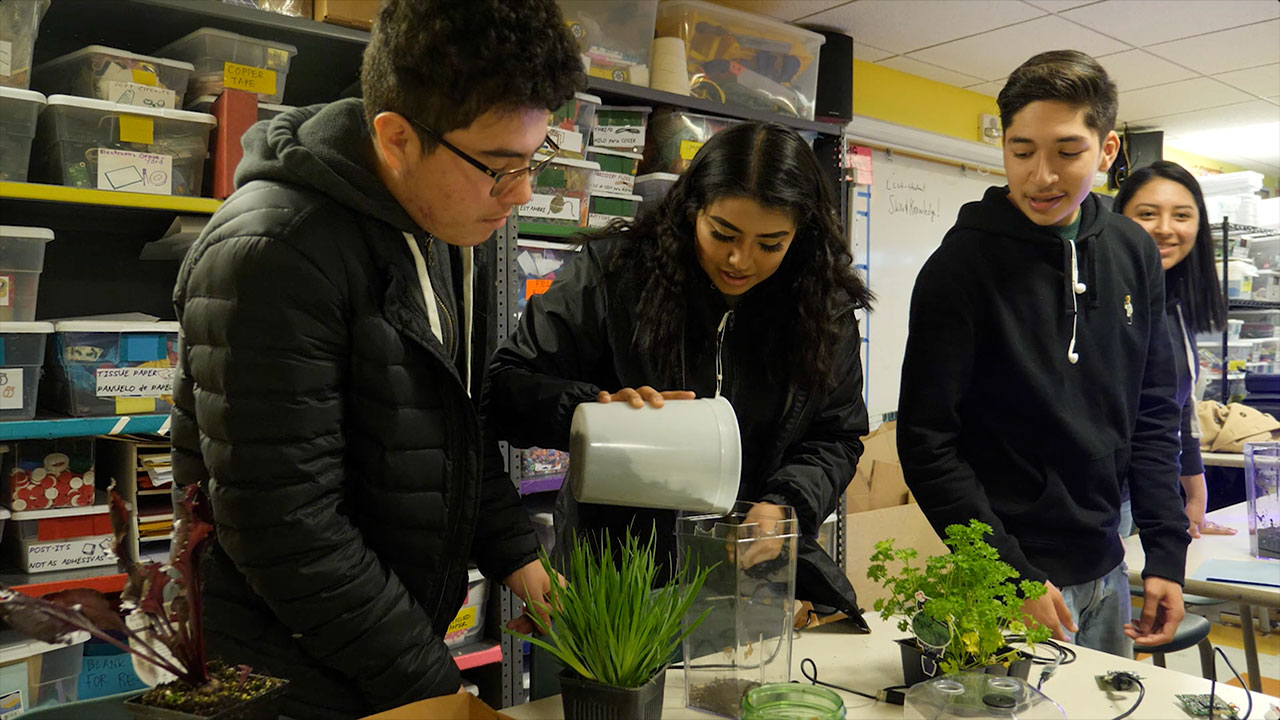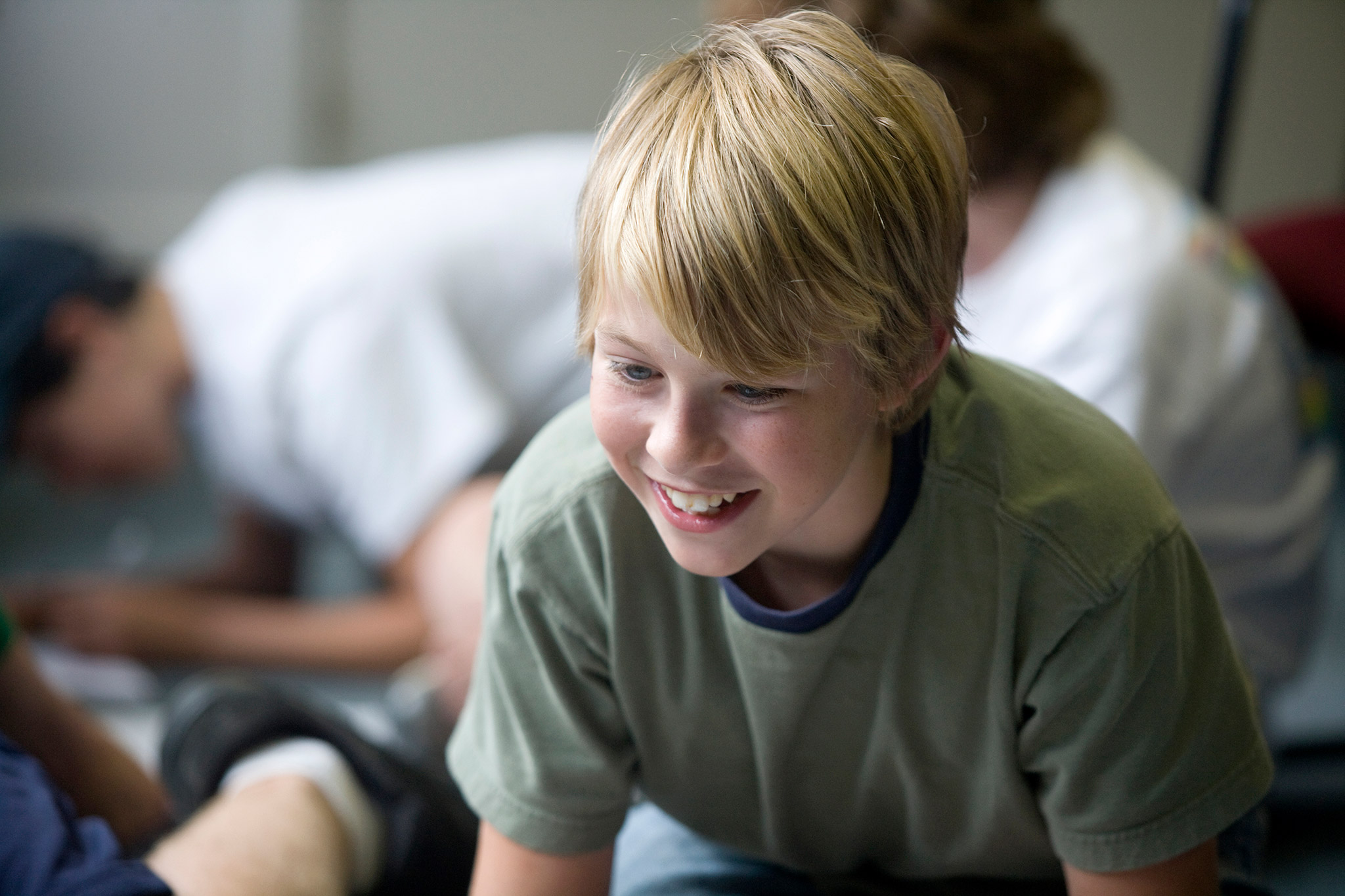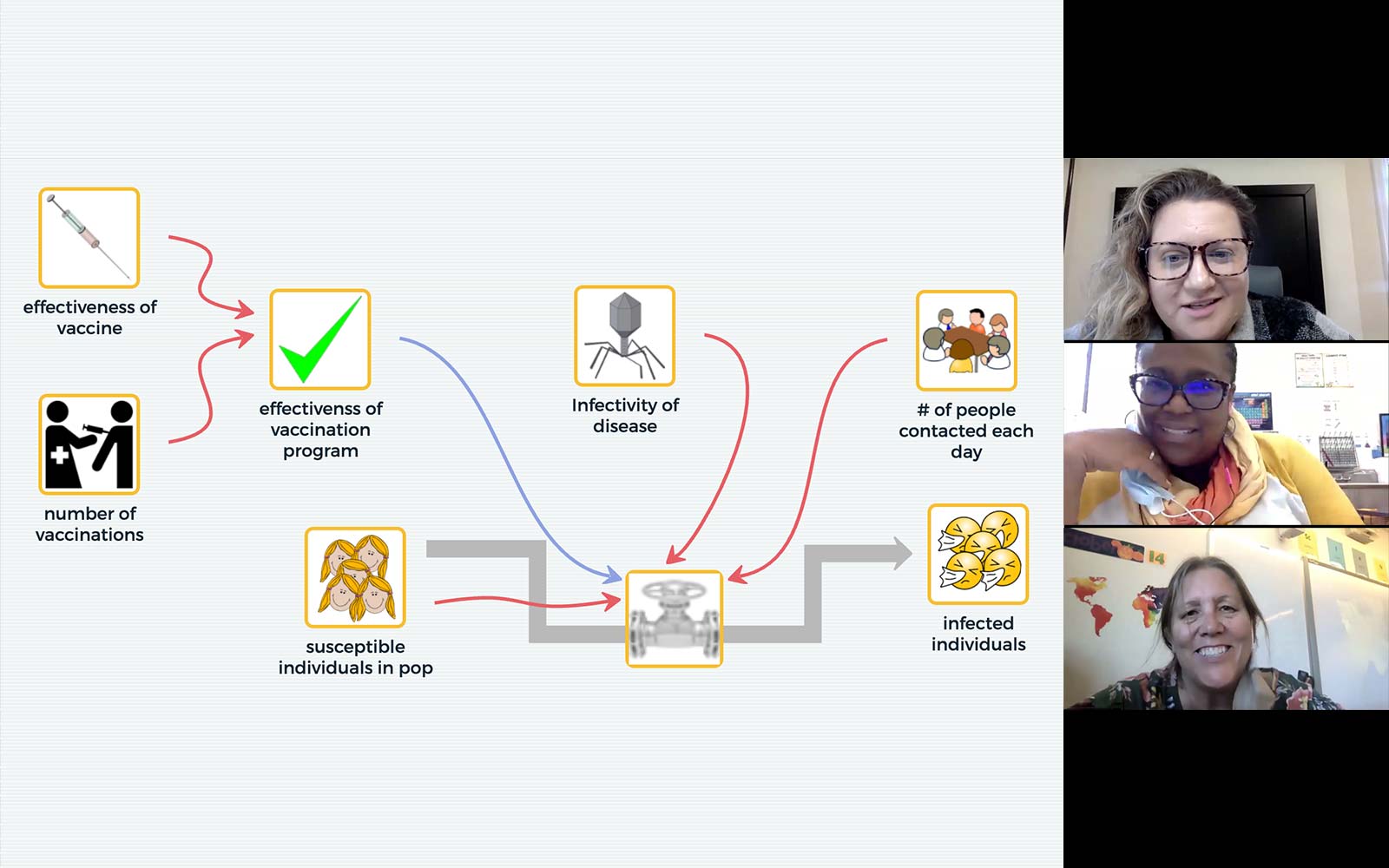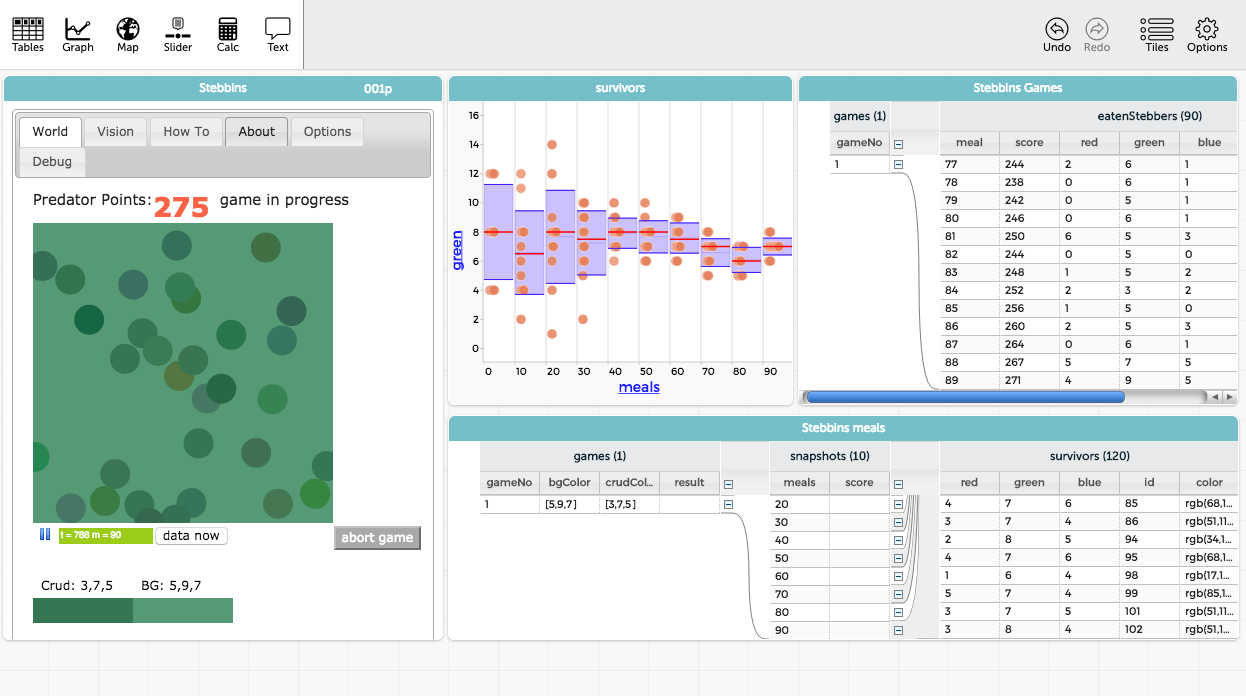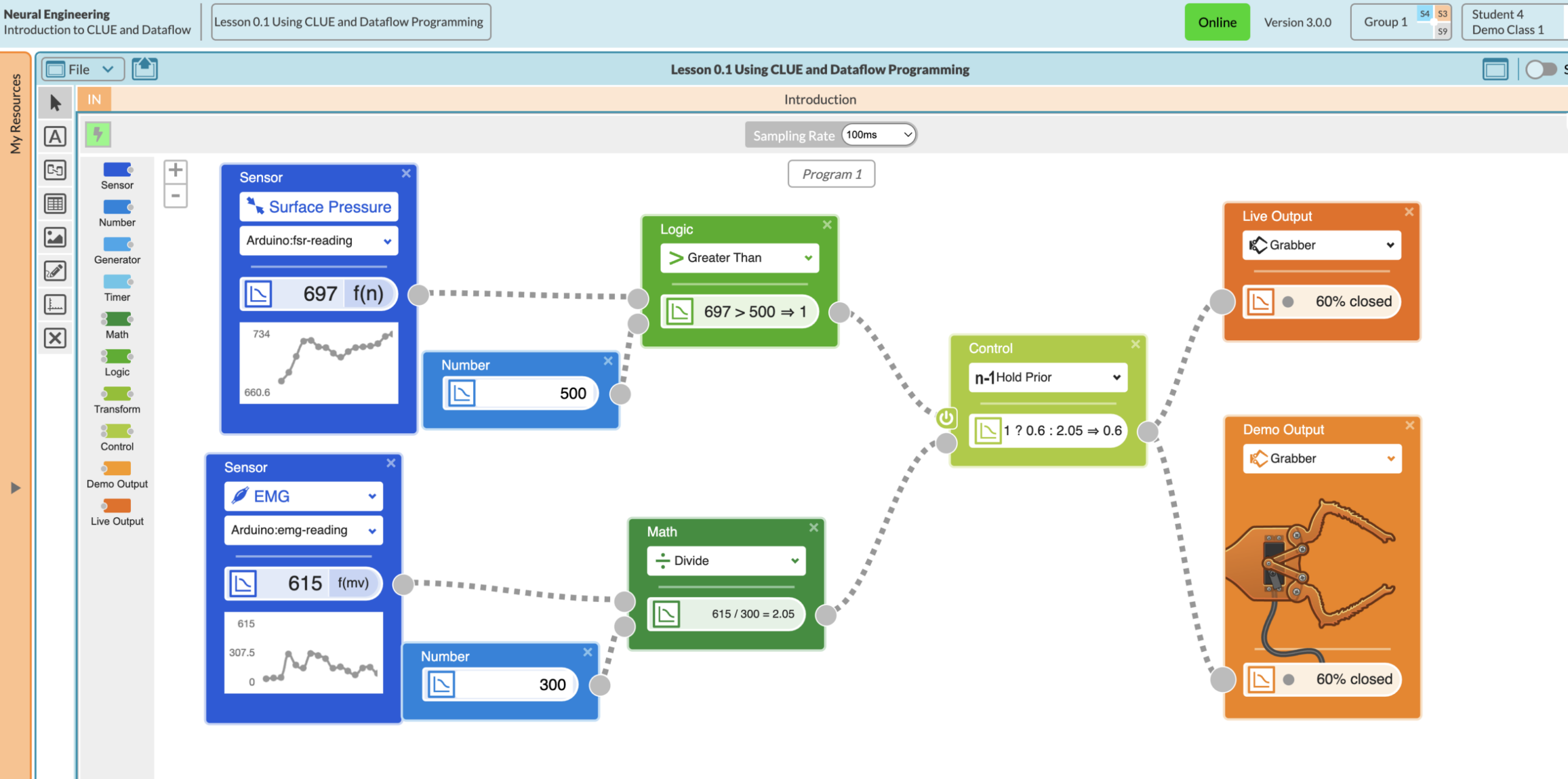InSPECT
Importance
Instead of cookbook experiments with known outcomes, science education should be more authentic and more like contemporary science. A new generation of inexpensive technology can bring this goal closer to reality in K-12 education. These technologies are exemplified by the intelligent objects that constitute the “Internet of Things” (IoT). The fundamental characteristic of the IoT technology is connectivity — IoT devices have sensors, actuators, and wireless connection to the Internet, all controlled by incredibly powerful computers, exactly the functions needed in a smart laboratory.
The InSPECT project forges new directions in science learning by integrating novel technologies and computational thinking practices into curricular activities that allow high school students to undertake authentic and independent science investigations in biology. Using inexpensive smart interfaces to create systems with sensors and actuators, InSPECT aims to make scientific inquiry more engaging and accessible. This approach also gives students opportunities to engage in science and engineering practices. They can design investigations, configure hardware, and use dataflow software to sense and control experiments, much the way professional scientists do.
We’ve partnered with Manylabs to create novel learning opportunities that can lead to the enhancement of science learning through authentic hands-on investigations, dataflow programming, and laboratories to improve science and engineering practices.
By using flexible low-cost technologies and a three-level curriculum including scaffolding, skills, and background knowledge, InSPECT is able to address many of the barriers that prevent students from practicing authentic science in the classroom. Students use programmable scientific and engineering tools (light sensors, fan motors, digital thermometers, etc.) to design a simple experiment to investigate phenomena, formulate and refine their own theories, and propose causal explanations of their observations. As they collect data, they can tinker and add complexity to their experiment with additional sensors and compare models with peers while refining their own theories and conceptual understanding based on primary experiences.
Research
We’re testing the feasibility of our computational resources to allow students to undertake scientific investigations, examining learning gains in students’ abilities to perform science practices, exercise computational thinking, and understand biology concepts, and identifying supports needed by teachers to implement the curriculum.
Videos
View this video and more on the Concord Consortium YouTube Channel.
Publications
- Hardy, L., Dixon, C., Doren, S. V., & Hsi, S. (2022). How the data got their dots: Helping students understand where data come from. The Science Teacher, 89(3), 20–25.
- Doren, S. V., Hardy, L., Dixon, C., & Hsi, S. (2022). Data at a distance: Innovative science experiments using the internet of things. The Science Teacher, 89(3), 26–31.
- Hardy, L., & Dixon, C. (2021). Student epistemic agency and coherence-seeking through laboratory experiments. In E. de Vries, J. Ahn, & Y. Hod (Eds.), 15th International Conference of the Learning Science — ICLS 2021 (pp. 689-692). International Society of the Learning Sciences.
- Hardy, L. (2021). Integrating technology and science: Preparing students for the world they live in. @Concord, 25(1), 4–6.
- Doren, S. V., Hardy, L., Dixon, C., & Hsi, S. (2021). Distributed interactions during ‘hands-on’ labs with paraeducators. Poster presented at the 15th International Conference of the Learning Sciences; June, 2021; Bochum, Germany.
- Bondaryk, L., Hsi, S., & Doren, S. V. (2021). Probeware for the modern era: IoT Dataflow System design for secondary classrooms. IEEE Transactions on Learning Technologies, 14(2), 226–237.
- Dixon, C., Hardy, L., Hsi, S., & Van Doren, S. (2020). Computational tinkering in science: Designing space for computational participation in high school biology. In Gresalfi, M. and Horn, I. S. (Eds.), The Interdisciplinarity of the Learning Sciences, 14th International Conference of the Learning Sciences (ICLS) 2020, Volume 1 (pp. 154-161). Nashville, Tennessee: International Society of the Learning Sciences.
- Van Doren, S. (2020). Sensors and spinach: Increasing student agency in biology class. @Concord, 24(1), 8–9.
- Haavind, S., Hsi, S., Hardy, L., Farmer, T., & Koster, K. (2020). Supporting learner agency with data to improve science classroom learning and culture. Paper presented at NARST 93rd Annual International Conference, March 15-18, 2020, Portland, OR.
- Hardy, L., Dixon, C., & Hsi, S. (2020). From data collectors to data producers: Shifting students' relationship to data. Journal of the Learning Sciences, 29(1), 104–126.
- Dixon, C. (2019). Why everyone can and should be a scientist. @Concord, 23(1), 8-9.
- Hardy, L., & Lewandowski, M. (2018). Under the hood: Using raspberry pis and wifis to do more with data. @Concord, 22(2), 14.
- Hsi, S., Hardy, L., & Farmer, T. (2017). Science thinking for tomorrow today. @Concord, 21(2), 10-11.
Blog Posts
Learn more about the InSPECT project at the Concord Consortium blog.
- Inspiring students to do science like scientists
- Curiosity in the science lab
- Doing without cookie cutter labs
- Designing 2030 is designing for the future today
- From data collectors to data producers
- Computational thinking in biology: What is an InSPECT Dataflow diagram?
Curriculum and Resources
Learn more about bringing data production to your classroom.

